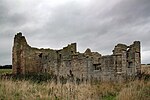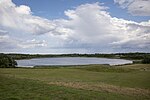Widdrington Village
Civil parishes in NorthumberlandUse British English from August 2019Villages in Northumberland

Widdrington is a village and (as Widdrington Village) a civil parish in the county of Northumberland, England. It borders Tritlington and West Chevington and East Chevington parishes to the north, the North Sea to the east, Cresswell and Ellington and Linton parishes to the south, and Widdrington Station and Stobswood parish to the west. In 2011 the parish has a population of 167.
Excerpt from the Wikipedia article Widdrington Village (License: CC BY-SA 3.0, Authors, Images).Widdrington Village
School Row,
Geographical coordinates (GPS) Address Nearby Places Show on map
Geographical coordinates (GPS)
| Latitude | Longitude |
|---|---|
| N 55.25682 ° | E -1.60018 ° |
Address
School Row
School Row
NE61 5EN , Widdrington Village
England, United Kingdom
Open on Google Maps








